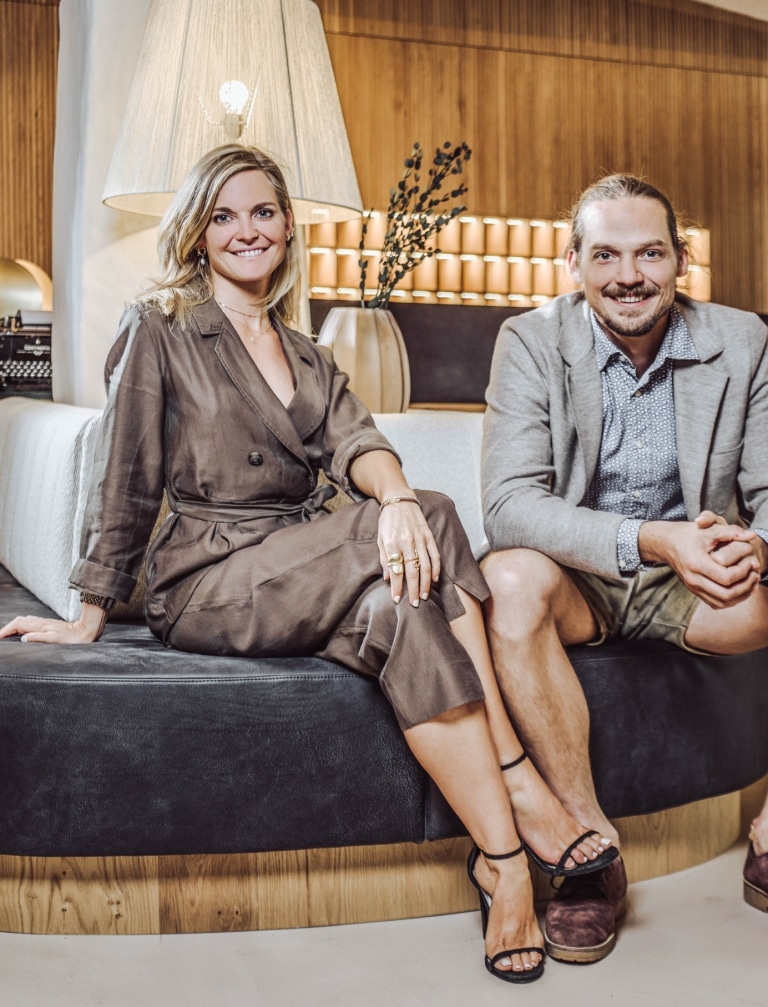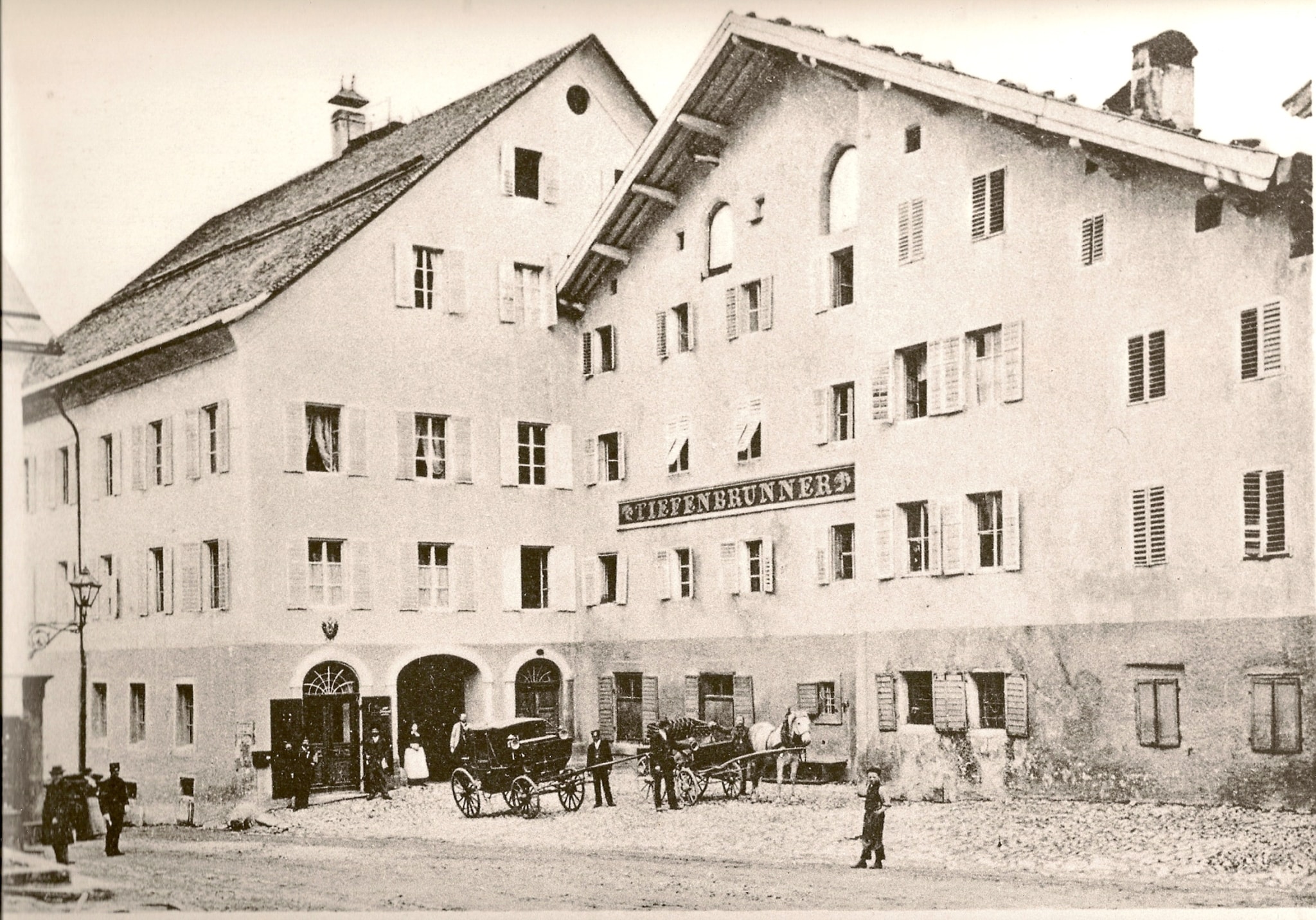
A place
that has many stories to tell
Tiefenbrunner 1810 History
More than 200 years, nine generations thus far. The Tiefenbrunner has been delighting for centuries. About 800 years ago the house has been mentioned for the first time, since 1810 it is family-owned. Josef Steiner bought the then “Tiefenbrunner” and the “Welserhaus”, which have been passed down from generation to generation ever since.
- The family history begins.
Josef Steiner buys the then “Tiefenbrunner” and the “Welserhaus”, thus, laying the foundation for our present Tiefenbrunner 1810. A few generations later, Hugo Mamoser, great-grandson of Josef Steiner, became known as the first “Tiafinga” – a role now held by Markus Obermoser several generations later.
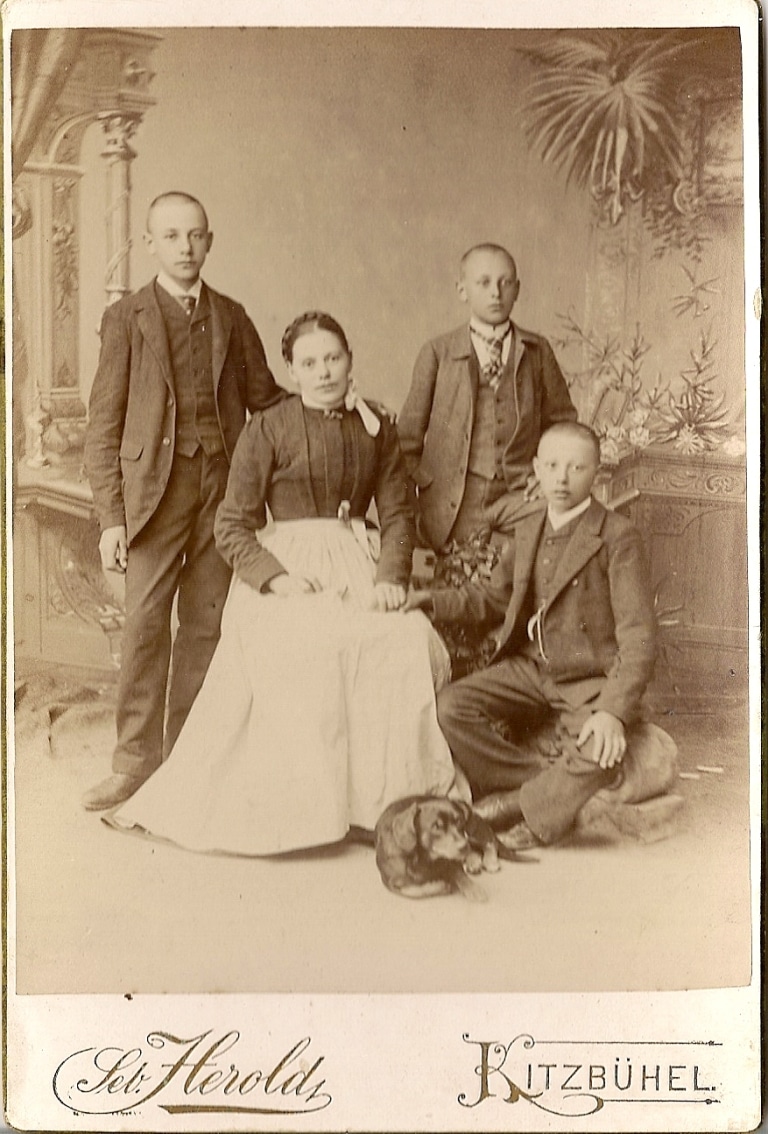
1810 - Die Familiengeschichte beginnt.
Erstellt und zusammengetragen von Dr. Manfred Rupert
In 1810, more than 200 years ago,
Martin Tiefenbrunner the last son of the beer brewing family of this name, played a significant role in the history.
Martin Tiefenbrunner inherited the former family property only to sell on tto Josef Stainer.Josef Stainer was a farmers son from Bramberg in Pinzgau a trained beer brewer and an ancestor of the current owner – a picture of this founding father and his wife Anna née Dankl still hangs in the hotel restaurant.
The sale by Martin Tiefenbrunner to Josef Stainer was made official on 22nd December 1810 although all the details had already been agreed during a meeting on Sunday 2nd September 1810 and Josef Stainer had been running the business since then.
Josef Stainer duly bought more property by Ecking and towards Schwarzsee bought a mill not far from his brewery, north of the town near the mining company administration he built a cellar in the rock with summer guest business. In 1829 he also bought the property between his brewery/guesthouse and the “Spitaltor” gate, the Welser house. In 1836 to make way for the new commercial road through the centre of town, part of the hospital church had to be demolished as did the Welserhaus which Josef Stainer then began to re-build in 1836. This hard working businessman was also the mayor of Kitzbühel between 1823 and 1826.
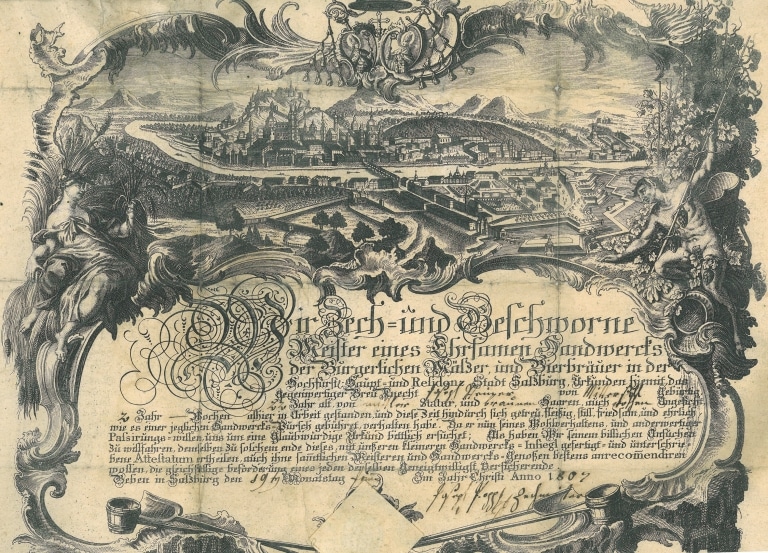
Anna Steiner
In 1838 Josef Stainer passed on his property to his daughter Anna and his son-in-law Sebastian Schlechter. His father, who also shared the same name, was the postmaster and innkeeper in St. Johann in Tirol as well running the Stanglwirt in Going. Josef Stainers son-in-law had gained some practical experience in innkeeping looking after the Stanglwirt for his father by the time he married Josef Stainers daughter in Kitzbühel in 1836.
In 1840 the post collection point in Kitzbühel for the post services in St Johann in Tirol was established. The Tiefenbrunner brewer, Sebastian Schlechter, as previously mentioned was the son of the St Johann postmaster, was put in charge of this collection point. The post collection point which later became the post office was situated in the ground floor of the Welserhaus. Anna and Sebastian Schlechter were kept busy with the guesthouse, the brewery, the mill, the farmland and the post collection point.
In 1841 Sebastian Schlechter was appointed to a new position, already a magistrate he now became mayor of Kitzbühel. The couple bought some real estate in Gundhabing – between Kitzbühel and Kirchberg. Unfortunately, whilst still in office as mayor, Sebastian Schlechter died in 1843. His young widow Anna remarried in 1844 to the son of a stable owner from Jenbach near Wiesing – Johann Ruch and ran the various businesses further with him. The couple bought a further farm in Gundhabing and also the Schwarzsee. Johann Ruch also had as a wagon business and in the summer months offered a horse drawn wagon service for up to 12 people from Kitzbühel via Hopfgarten to Wörgl and back. There it was possible to get a connection with the railway line.
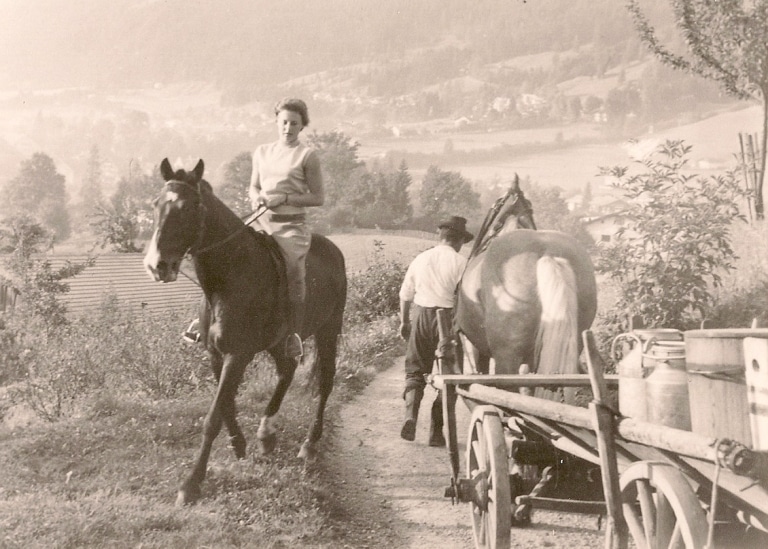
- Tourismus becomes a flourishing business
The guesthouse “Tiefenbrunner” had a good name right from the early days of tourism and Anna Ruch was very welcoming to the burgeoning tourist trade. ‘When Archduke Johann came to Kitzbühel in 1858 as part of his last Tirol tour he stopped with his adjutant at the Tiefenbrunner. The
first entry into the still existing first guest book of the hotel is that of the imperial prince on 14th September 1858.
Anna and Johann Ruch were supporters of the new railway line through Kitzbühel and the Brixen valley, they even travelled to Vienna to show their support. When the railway line became reality in 1875 they were disappointed in their hope of a railway station in Gundhabing.
In 1874 Anna Ruch, née Stainer, widowed Schlechter passed on the guesthouse with brewery and mill, the post office, farmland in Ecking and the Schwarzsee lake to her son from her first marriage Jakob Schlechter.
Following the death of his mother in 1877 Jakob Schlechter sold his inheritance, except the Schwarzsee, to his half-brother Martin Ruch.
Martin Ruch, who had already inherited the property in Gundhabing, then became brewer, innkeeper and postmaster and in 1881 he extended the post office.
He tragically died in 1884 and in 1886 and Jakob Schlechter bought back the property that he had sold his half-brother from his estate and also the property in Gundhabing though he sold this on again in 1900.
The postmaster position was no longer held by the Tiefenbrunner brewer, in 1885 it was awarded to Johann Federer, though the Post continued to occupy the ground floor of the Welserhaus until 1926.
Jakob Schlechter’s marriage was not blessed with children he did however have four sons with his housekeeper Maria Mamoser, three of whom reached adulthood.
Hugo Mamoser, born in 1883 took over the business of his parents and proved himself to be a hotelier most welcoming to tourists.
In 1908 he built a bathing area on the south side of the Schwarzsee and added a restaurant in 1912 (a painting of this by Alfons Walde hangs in the conference room of the Tiefenbrunner)
In 1913 Hugo Mamoser married Maria Putz from Kirchberg.
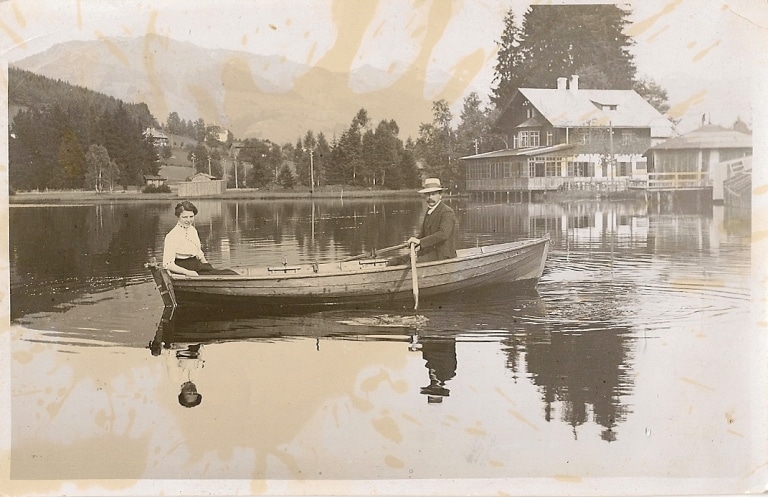
Franz Waltl & Maria Mamoser
In 1913 Hugo Mamoser married Maria Putz from Kirchberg.
The guest house, in the meantime a hotel, and brewery as well as the farmlands were flourishing when the first world war broke out in 1914.
The officer Hugo Mamoser died in September 1914 aged 31 in a military hospital from the injuries sustained on the Serbian border.
He left behind a young widow, a one year old daughter Maria and a second daughter Helma born two and a half months after her fathers death.
Maria Mamoser née Putz married Franz Waltl in 1918. He owned the railway station restaurant and his father was a stable owner and business man from St Johann in Tirol.
The brewery and mill businesses wound up soon after the end of the first world war but the hotel and farming enterprises were still very successful.
The 2nd world war took the lives of the two sons from the marriage between Franz Waltl and Maria widowed Mamoser – Franz and Max just 19 and 21.
Following the death of his wife Maria, Franz Waltl married for a second time to Helene Gstrein.
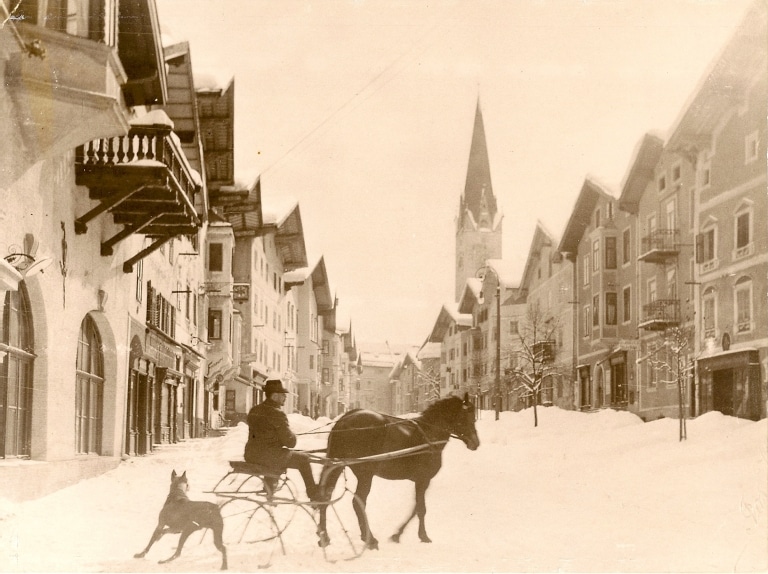
Maria Mamoser
After the unexpected death of Franz Waltl in 1958 the ownership passed to his stepdaughter Maria Mamoser, born in 1914 the firstborn daughter of Hugo Mamoser.
In 1974 Maria Mamoser passed on the hotel and farming business to her daughter Gertraud Mamoser and her son-in-law Adolf Brunner from Schwendt
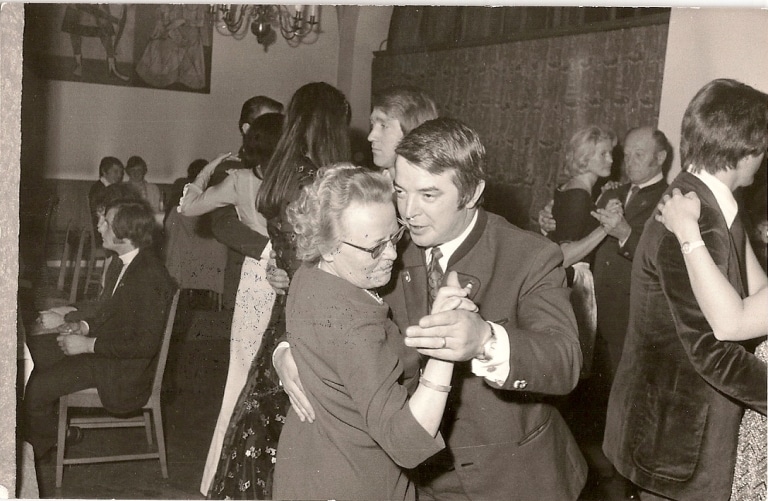
Adolf Brunner , who not only increased the size of the property of “Lucken” in Schwendt but also of the Tiefenbrunner. The renovation of the Tiefenbrunner in 1975 was the largest private building site in the Tirol! Further renovations of the Welserhaus, new Lucken stable, new hut on the Horn, Liabei, staff house etc were all the work of the Brunners!
From this union were born Maria Brunner-Mitterer, Wolfgang Brunner, Elisabeth Bodner and Eva Kreuzpaintner.
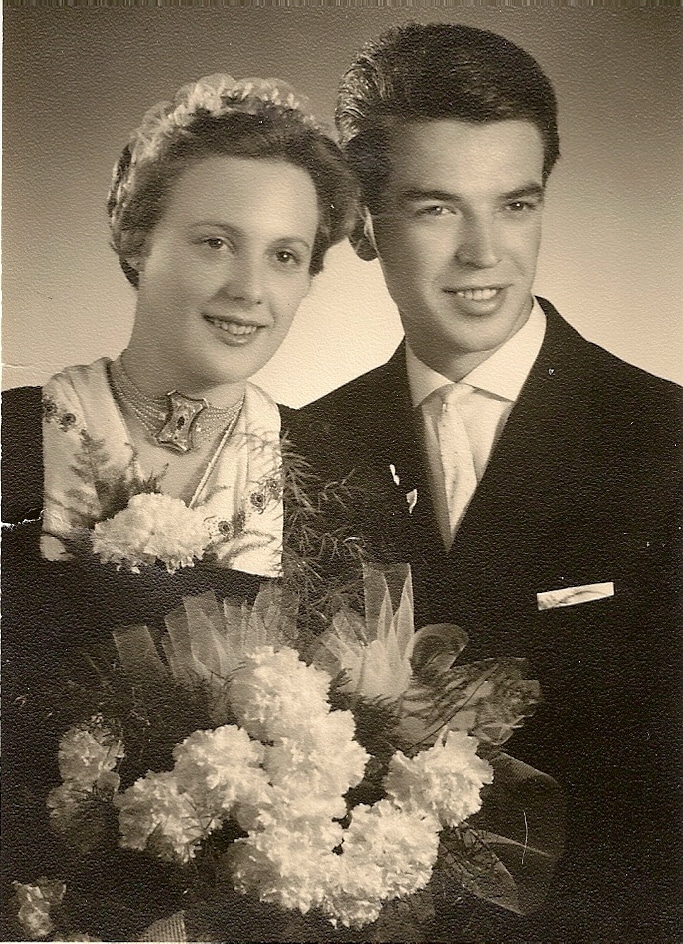
Following the death of Adolf Brunner in 1999, Wolfgang inherited the farming interests and Maria Brunner the hotel which in keeping with tradition she runs with great style and success.
Over the years, many renovations have taken place, such as the wellness area, bar, reception, redesign of the private garden, most of the hotel rooms, the restaurant Goldene Gams,… the Tiefenbrunner has developed into a modern hotel with lifestyle and comfort while still retaining its traditional charm.
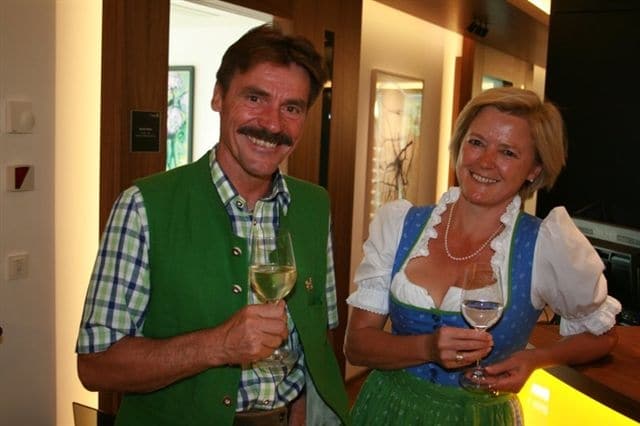
And today?
Today we build on this long family tradition which firmly anchors us in our principles of tradition, consciousness and hospitality. Today we stand before you with at least as much joy and love of hospitality as our previous generations. Today we would like to show you a Tiefenbrunner that our ancestors would have been proud of as well.
